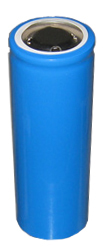DIWdiver
Flashlight Enthusiast
Hi everyone,
I have been ghosting this board for quite a while, and learning a lot, for which I am grateful. I finally think I may have something to contribute.
There seems to be a shortage of high current drivers for the newest high power LEDs. As a result of a recent conversation, I have designed a driver capable of up to 10A. I'm an engineer by profession and have built several LED drivers, but in the area of flashlights I'm a hobbyist. Since I don't need this driver myself, the question of whether it's worth building is more a question of whether folks would use it than whether I could make money. I'm posting now to see whether people would be interested in this driver if I built a few of them.
The characteristics would be:
Max current:10 A (or less if desired)
Max input voltage: 12V (16V available at higher cost).
Dual-level output: Selectable high/low output, via SPDT switch
Adjustable output: "high" output adjustable from 1A to 10A and "low" output adjustable from 1A to 2.5A by adding series resistors, 10A/2.5A with no resistors.
Size: 1.0 inch diameter by 0.35 inch thick
Heatsink: This is a linear regulator, so it will require heatsinking to protect from overheating. Connection to heatsink would be by one screw, #4, #6, 2.5mm or 3mm, or by thermal epoxy. Heatsink compound recommended if using screw.
This would be a 0-mode driver, meaning it's on whenever you apply power. There's no 'clicky' switch interface. The High/Low switch could have a center off position if you want to turn it off that way. The switch is low current, so it could be a miniature or subminiature switch, not necessary to handle the output current. The driver would be compatible with PWM boards I have seen.
This driver was originally intended for driving a single SST-90 at 7A from a 4-cell Ni-MH battery pack. Though it could be use over a wide range, it would be most efficient when the input voltage is 0.4 to 1.0 volts above the output voltage. With proper heatsinking , the driver could handle up to 30W dissipation, up to 100 watts output. Higher power levels could be made available if necessary.
If there's enough interest, I will make some of these, available at around cost, in the appropriate B/S/T area. If not, then I'm sorry to bother you.
D
I have been ghosting this board for quite a while, and learning a lot, for which I am grateful. I finally think I may have something to contribute.
There seems to be a shortage of high current drivers for the newest high power LEDs. As a result of a recent conversation, I have designed a driver capable of up to 10A. I'm an engineer by profession and have built several LED drivers, but in the area of flashlights I'm a hobbyist. Since I don't need this driver myself, the question of whether it's worth building is more a question of whether folks would use it than whether I could make money. I'm posting now to see whether people would be interested in this driver if I built a few of them.
The characteristics would be:
Max current:10 A (or less if desired)
Max input voltage: 12V (16V available at higher cost).
Dual-level output: Selectable high/low output, via SPDT switch
Adjustable output: "high" output adjustable from 1A to 10A and "low" output adjustable from 1A to 2.5A by adding series resistors, 10A/2.5A with no resistors.
Size: 1.0 inch diameter by 0.35 inch thick
Heatsink: This is a linear regulator, so it will require heatsinking to protect from overheating. Connection to heatsink would be by one screw, #4, #6, 2.5mm or 3mm, or by thermal epoxy. Heatsink compound recommended if using screw.
This would be a 0-mode driver, meaning it's on whenever you apply power. There's no 'clicky' switch interface. The High/Low switch could have a center off position if you want to turn it off that way. The switch is low current, so it could be a miniature or subminiature switch, not necessary to handle the output current. The driver would be compatible with PWM boards I have seen.
This driver was originally intended for driving a single SST-90 at 7A from a 4-cell Ni-MH battery pack. Though it could be use over a wide range, it would be most efficient when the input voltage is 0.4 to 1.0 volts above the output voltage. With proper heatsinking , the driver could handle up to 30W dissipation, up to 100 watts output. Higher power levels could be made available if necessary.
If there's enough interest, I will make some of these, available at around cost, in the appropriate B/S/T area. If not, then I'm sorry to bother you.
D


 the LED at full charge. I just didn't want to risk it with a $50 LED.
the LED at full charge. I just didn't want to risk it with a $50 LED.